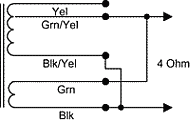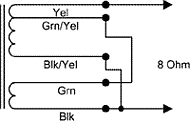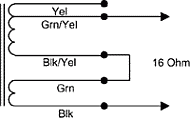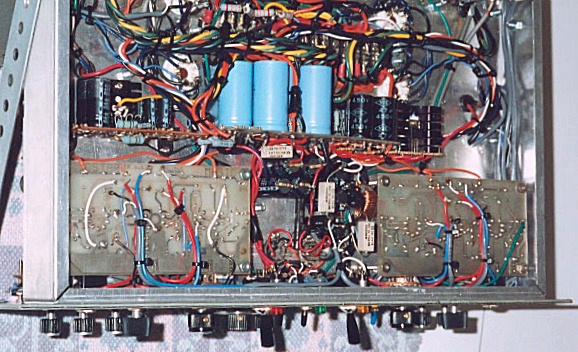Connect the primary wires of the transformer as follows:
| Red: ------------- | Raw B+ | |
| Solid brown: ----- | plate of V9 (V13) = pin 3 | |
| Brown w/ trace: -- | screen of V9 (V13) = pin 4 | |
| Solid blue: ------- | plate of V10 (V14) = pin 3 | |
| Blue w/ trace: ---- | screen of V0 (V14) = pin 4 |
| Connect the secondary wires of the transformer as appropriate for your speaker impedance. Because of the voltage feedback method, this design does a bit better with higher impedances; for this reason the 8- or 16-ohm connections are recommended. |
 |
 |
 |
| 4 ohm | 8 ohm | 16 ohm |
| Change R517/617 to 820K | Change R517/617 to 1.6M | |
| Change C503/603 to 6.8 pF | Change C503/603 to 3.3 pF |



